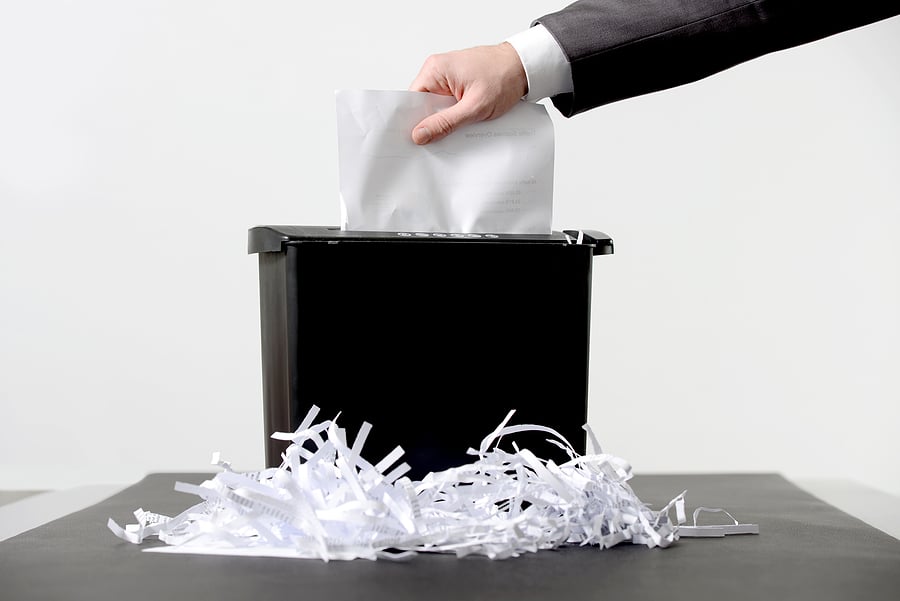How to Spring-Clean Your Document Destruction Policy

When Spring rolls around, you’ll likely be ready to tidy up some aspects of your business. Why not give your document retention and destruction policies a fine-tune? This can ensure your business runs smoothly while also ensuring the protection of important sensitive data.
Don’t know where to start? Follow this guide to give your existing document destruction policy a good spring cleaning.
Identify Sensitive Information in Records and Files
Before you can revamp your document destruction policy, you must know what information you need to protect in the first place. Sensitive data is identifying information that can be used to steal customer or employee identities. The consequences of identity theft are far-reaching and can take years to undo.
Sensitive information includes:
- Addresses
- Social Security numbers
- Bank information
- Full names
- Dates of birth
- Billing information
- Credit and debit card numbers
- Taxpayer information
- Criminal records
- Legal records and transcripts
- Police reports
- Medical records
If any of the documents you store within your business have this information on them, they’re considered sensitive documents. Unless you have good document destruction policies in place, these documents put your business at higher risk.
Implement Common-Sense Retention Periods
Retention periods specify how long a specific document type remains on file. After the retention period is over, your policy should call for the secure destruction of all aged documents.
You may have to take state and federal regulations into account when coming up with retention periods. However, if no rules are currently in place, we recommend using your best judgment.
For example, tax documents are important for three to seven years after each filing year. After seven years, you no longer need old tax records and keeping this information around contributes to clutter and security risks.
On the other hand, most accounting records and bank statements can age out of your business after you file your taxes for a given year. This sensitive financial information serves no purpose for your business and raises your risk for problems.
Use Secure Paper Shredding and Digital Destruction Services
You probably use a combination of paper and digital filing methods. It’s essential to have secure methods of destruction for both. This will ensure that old, unused information doesn’t fall into the hands of criminals.
Our paper shredding services are versatile and compliant with all business standards. We use the standard ⅝-inch strip cut to permanently destroy papers that are no longer in use. You can trust that your old paper records and files are gone for good.
We also offer hard drive destruction and solid-state shredding to wipe digital data away for good. This way, there’s no risk of hacking, theft, or other security problems that can compromise old digital data.
Permanent document destruction methods like shredding are best for your peace of mind. You can rest assured knowing your policy covers both digital and paper documents with SEAM Services.
Get a Data Destruction Quote for Your Business
At SEAM Services, we take secure data destruction seriously. We’re here to clean up any old, sensitive records and digital files you no longer need. We operate near Sioux Falls, SD, serving businesses in both North Dakota and South Dakota. Contact us for an estimate today!
SEAM provides IT recycling and data destruction services including onsite shredding and hard drive wiping to South Dakota, North Dakota, Minnesota, Iowa, and Nebraska.
Schedule a pickup or contact us for more information.





